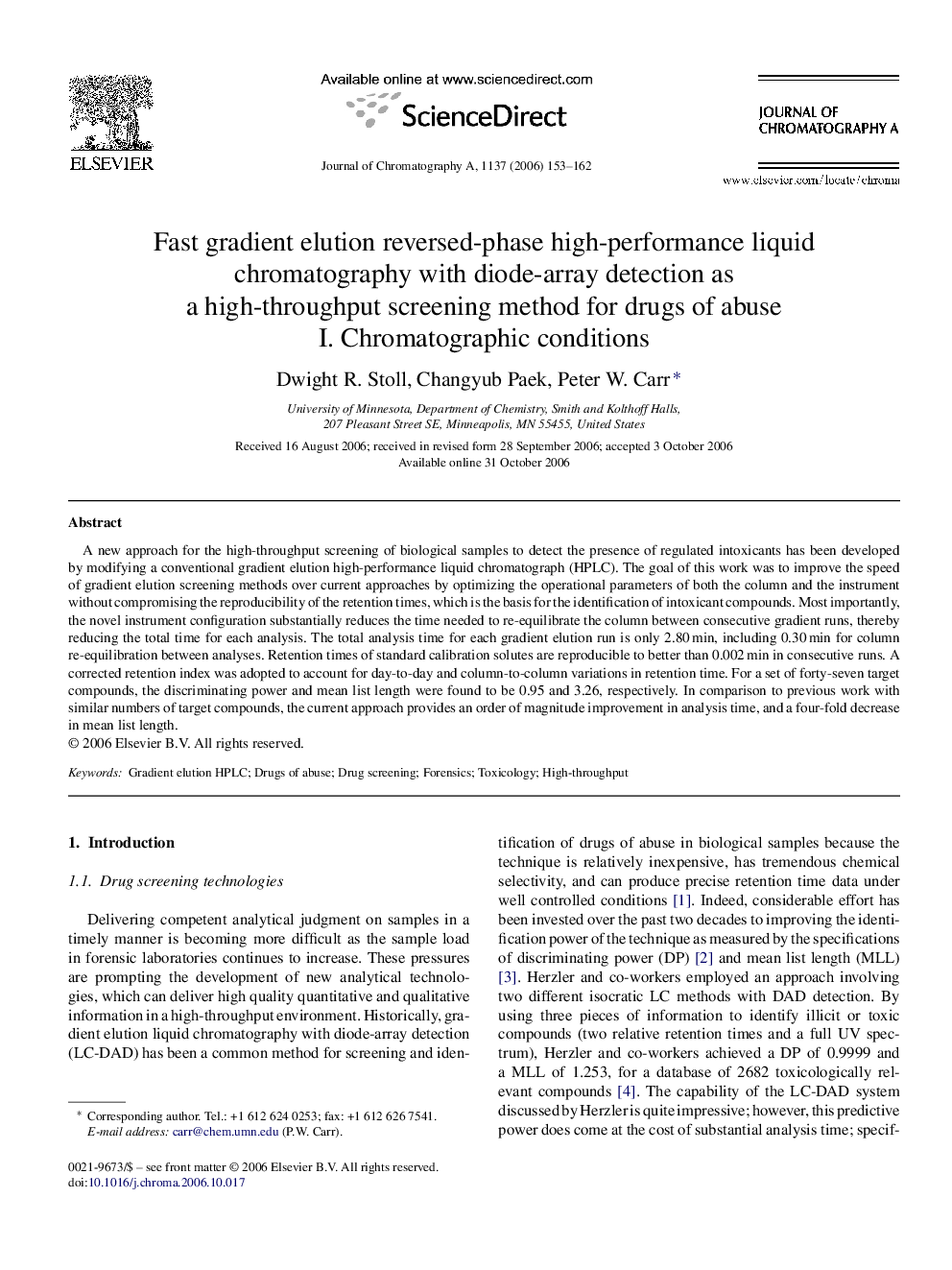| Article ID | Journal | Published Year | Pages | File Type |
|---|---|---|---|---|
| 1208344 | Journal of Chromatography A | 2006 | 10 Pages |
A new approach for the high-throughput screening of biological samples to detect the presence of regulated intoxicants has been developed by modifying a conventional gradient elution high-performance liquid chromatograph (HPLC). The goal of this work was to improve the speed of gradient elution screening methods over current approaches by optimizing the operational parameters of both the column and the instrument without compromising the reproducibility of the retention times, which is the basis for the identification of intoxicant compounds. Most importantly, the novel instrument configuration substantially reduces the time needed to re-equilibrate the column between consecutive gradient runs, thereby reducing the total time for each analysis. The total analysis time for each gradient elution run is only 2.80 min, including 0.30 min for column re-equilibration between analyses. Retention times of standard calibration solutes are reproducible to better than 0.002 min in consecutive runs. A corrected retention index was adopted to account for day-to-day and column-to-column variations in retention time. For a set of forty-seven target compounds, the discriminating power and mean list length were found to be 0.95 and 3.26, respectively. In comparison to previous work with similar numbers of target compounds, the current approach provides an order of magnitude improvement in analysis time, and a four-fold decrease in mean list length.
